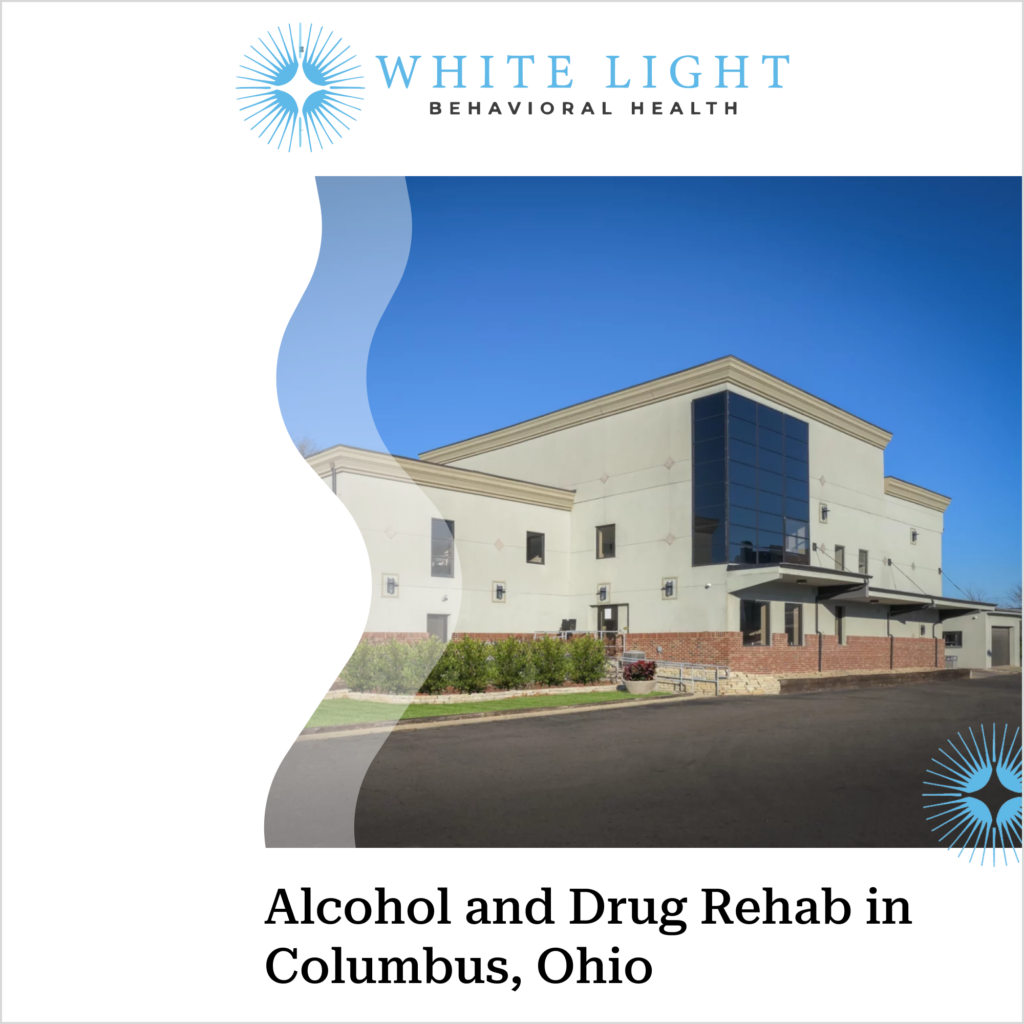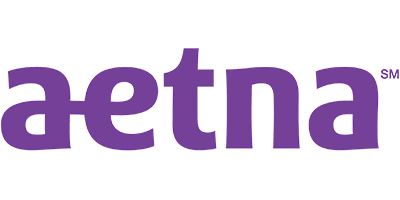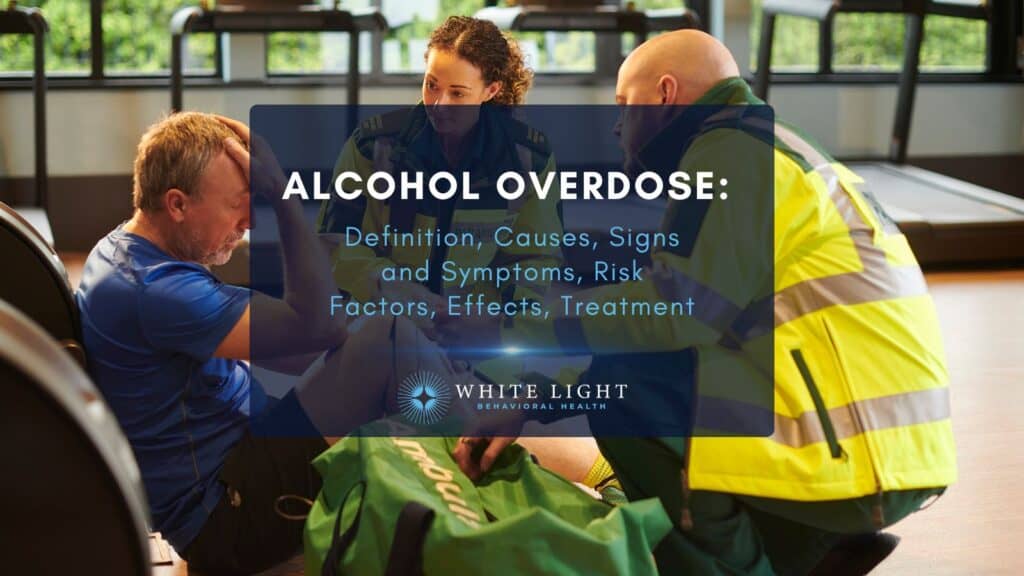Medicare in Ohio: Plan Types and Coverage for Drug Rehab and Mental Health

Medicare coverage in Ohio includes 3 primary plan types that provide comprehensive behavioral health benefits: Original Medicare (Parts A and B), Medicare Advantage plans, and Medicare Supplement insurance policies. Ohio’s healthcare landscape features Anthem holding 31% market share as the state’s largest insurer (AMA, 2024), while 477,793 Ohioans enrolled in ACA Marketplace plans with mandatory mental health coverage in 2024 (CMS, 2024). The Mental Health Parity and Addiction Equity Act (MHPAEA) requires Medicare plans to impose no stricter cost-sharing or treatment limits on mental health and substance use disorder benefits than on medical-surgical benefits (CMS, 2023). Medicare beneficiaries in Ohio access drug rehabilitation services, psychiatric care, counseling sessions, and medication-assisted treatment through these federally regulated insurance options, with coverage extending to inpatient detoxification, outpatient therapy programs, and prescription medications for opioid use disorder including buprenorphine, methadone, and naltrexone.What is Medicare and How Does it Work in Ohio?
Medicare is a federal health insurance program that provides healthcare coverage for Americans aged 65 and older, plus younger individuals with qualifying disabilities or end-stage renal disease. Medicare operates through 4 distinct parts: Part A covers hospital insurance, Part B provides medical insurance for outpatient services, Part C offers Medicare Advantage plans as alternatives to traditional Medicare, and Part D delivers prescription drug coverage (CMS, 2024). Medicare differs from Ohio’s Medicaid program, which covered 3.21 million Ohioans in 2024, representing about 27% of the state’s population (USAFacts, 2024).
Medicare enrollment occurs during specific periods, with Initial Enrollment beginning 3 months before turning 65 and extending 3 months after the birthday month. Ohio residents access Medicare through traditional fee-for-service or Medicare Advantage plans offered by insurers like Anthem, which holds 31% of Ohio’s health insurance market share (AMA, 2024). Medicare coordinates with other Ohio insurance options differently than Medicaid expansion coverage, which serves approximately 770,000 Ohio residents as of 2025 (HPIO, 2025).
Medicare beneficiaries in Ohio interact with the state’s healthcare system alongside other insurance types, including the 477,793 Ohioans who enrolled in ACA Marketplace plans for 2024 coverage (CMS, 2024). Medicare Parts A and B provide core hospital and medical coverage, while Medicare Part D prescription drug plans coordinate with Ohio’s 13 insurers offering marketplace coverage in 2025 (HealthInsurance.org, 2024). Medicare eligibility requires either age 65+ status or qualifying disability conditions, contrasting with Medicaid expansion which covers adults up to 138% of federal poverty level regardless of age. Did you know most health insurance plans cover substance use disorder treatment? Check your coverage online now.What Types of Medicare Plans Are Available in Ohio?
Medicare beneficiaries in Ohio access 4 primary plan types that operate through the state’s insurance market. Original Medicare includes Part A hospital coverage and Part B medical services, providing baseline healthcare access statewide. Medicare Advantage (Part C) plans combine Parts A and B through private insurers, with 13 insurers offering ACA Marketplace plans in Ohio as of 2025 (HealthInsurance.org, 2024). Medicare Prescription Drug Plans (Part D) add medication coverage, while Medicare Supplement Insurance (Medigap) fills coverage gaps in Original Medicare plans.
Anthem, Ohio’s largest health insurer holding 31% market share, serves Medicare beneficiaries alongside other major carriers (AMA, 2024). Residents in nearly all Ohio areas have at least 5 different insurers’ plans to choose from for 2025 coverage (HealthInsurance.org, 2024). Plan availability varies across Ohio’s 88 counties, with metropolitan areas offering more Medicare Advantage options than rural counties. CareSource, Ohio’s largest Medicaid managed care plan serving over 2.1 million members, also participates in Medicare plan offerings (CareSource, 2023).
Ohio Medicare plan selection reflects broader insurance market dynamics affecting beneficiary choices. The number of Marketplace insurers is expected to decrease to 11 for 2026, as two carriers exit while Antidote Health enters the market (HealthInsurance.org, 2025). Medicare beneficiaries face similar network considerations as other Ohio residents, with the majority of individual market plans being HMO or EPO types offering no out-of-network coverage for non-emergency care (ODI, 2023). Only minority PPO plans provide partial out-of-network benefits, making in-network provider access crucial for Medicare enrollees statewide.How Does Original Medicare Cover Mental Health Services?
Original Medicare covers mental health services through Part A for inpatient psychiatric hospital stays and Part B for outpatient mental health care including psychiatry visits, psychotherapy sessions, and partial hospitalization programs. Medicare Part A provides coverage for psychiatric hospital admissions with beneficiaries paying the $1,632 deductible per benefit period in 2024, while Part B covers 80% of outpatient mental health costs after the annual deductible is met (CMS, 2023). The Mental Health Parity and Addiction Equity Act (MHPAEA) requires that Medicare impose no stricter cost-sharing or treatment limits on mental health benefits than on medical/surgical benefits (CMS, 2023).
Medicare Part B outpatient mental health coverage includes individual and group psychotherapy, psychiatric evaluations, medication management visits, and diagnostic assessments with beneficiaries responsible for 20% coinsurance after meeting the annual Part B deductible. Partial hospitalization programs receive coverage when provided by Medicare-certified facilities, offering intensive outpatient treatment for up to 5 days per week without overnight stays. Federal parity requirements ensure that Medicare’s mental health benefits maintain equivalent annual visit limits, prior authorization requirements, and copayment structures compared to general medical services (CMS, 2023).
Medicare covers psychiatric services provided by licensed psychiatrists, clinical psychologists, licensed clinical social workers, and other qualified mental health professionals within approved treatment settings. Inpatient psychiatric care receives coverage for 190 lifetime days in psychiatric hospitals, with Medicare paying costs beyond the Part A deductible during each benefit period. Behavioral health services accounted for 3.8% of all medical claim costs in 2023, demonstrating increased utilization of mental health care among Medicare beneficiaries (PwC, 2023).How Does Original Medicare Cover Substance Use Disorder Treatment?
Original Medicare covers substance use disorder treatment through Medicare Part A for inpatient detoxification and residential programs, while Part B covers outpatient counseling and medication-assisted treatment services. Medicare beneficiaries receive coverage for all three FDA-approved medications including buprenorphine, methadone, and naltrexone without prior authorization requirements (CMS, 2023). The Medicare program treats addiction treatment as essential medical care, applying the same coverage standards used for other chronic medical conditions.
Inpatient detoxification programs receive full Medicare Part A coverage when medically necessary and provided in Medicare-certified facilities. Residential treatment programs qualify for Medicare coverage if they meet specific medical criteria and demonstrate medical supervision requirements (CMS, 2023). Outpatient substance abuse counseling sessions are covered under Medicare Part B at 80% after the annual deductible, with beneficiaries responsible for the remaining 20% coinsurance.
Medicare eliminates prior authorization barriers for medication-assisted treatment, ensuring immediate access to buprenorphine-naloxone combinations and extended-release naltrexone formulations. Coverage limitations apply to luxury residential facilities that emphasize amenities over medical treatment protocols. Medicare requires treatment providers to maintain specialized addiction treatment certification and demonstrate evidence-based treatment methodologies for reimbursement eligibility (CMS, 2023).What Mental Health and Drug Rehab Services Do Medicare Advantage Plans Cover in Ohio?
Medicare Advantage plans cover all mental health and substance use disorder services that Original Medicare covers, plus additional behavioral health benefits tailored to enrollee needs (CMS, 2023). Under the ACA, health plans must cover mental health and substance use disorder services as one of ten essential health benefit categories, ensuring comprehensive coverage for Ohio’s Medicare Advantage enrollees (CMS, 2023). The Mental Health Parity and Addiction Equity Act requires that insurance plans impose no stricter cost-sharing or treatment limits on mental health and SUD benefits than on medical or surgical benefits (CMS, 2023).
Ohio Medicare Advantage plans provide supplemental behavioral health services beyond standard coverage, including expanded therapy sessions, care coordination programs, and telehealth options for remote access. Behavioral health services accounted for 3.8% of all medical claim costs in 2023, more than double their share of 1.8% in 2018 (PwC, 2023). Insurers’ spending on behavioral health claims increased to an average of $122.79 per behavioral health claim in 2023, up from approximately $106.84 in 2018 (PwC, 2023). Ohio implemented “Next Generation” Medicaid managed care plans in 2023, designed to improve care coordination with enhanced behavioral health support and specialized children’s behavioral health plans (ODM, 2023).
Network considerations create significant challenges for Ohio Medicare Advantage enrollees seeking mental health and drug rehabilitation services. Ohio patients needing behavioral health services are up to 5 times more likely to go out-of-network for care than patients with other medical needs (Community Solutions, 2019). National data show out-of-network use is 3.5 times higher for mental health and substance use treatment than for medical or surgical care, indicating persistent network gaps (NAMI/RTI, 2024). In-network reimbursement for mental health clinicians averages 22% lower than for other medical clinicians, disincentivizing providers from joining insurance networks and forcing patients to seek higher-cost out-of-network providers (NAMI/RTI, 2024).Which Insurers Offer Medicare Advantage Plans with Strong Mental Health Coverage in Ohio?
Anthem Blue Cross and Blue Shield dominates Ohio Medicare Advantage plans with 31% market share while offering comprehensive behavioral health networks (AMA, 2024). CareSource serves as Ohio’s largest Medicaid managed care provider with over 2.1 million members across its markets, maintaining extensive mental health provider networks (CareSource, 2023). 13 insurers offered ACA Marketplace plans in Ohio during 2025, giving residents multiple options for mental health coverage (HealthInsurance.org, 2024).
Major Ohio insurers provide substance use disorder treatment through federally mandated essential health benefits covering 478,000 Marketplace enrollees in 2024 (CMS, 2024). All three FDA-approved opioid use disorder medications including buprenorphine, methadone, and naltrexone receive coverage through Ohio’s Medicaid program without prior authorization barriers (ODM, 2021). Commercial insurers operating in Ohio cover buprenorphine/naloxone therapy as standard policy benefits following federal parity enforcement initiatives (ODI, 2023).
Ohio patients seeking behavioral health services face 5× higher likelihood of using out-of-network providers compared to medical care patients due to network adequacy gaps (Community Solutions, 2019). Mental health clinicians receive 22% lower reimbursement rates than other medical specialists, creating provider participation challenges across insurance networks (NAMI/RTI, 2024). Behavioral health claims costs increased to $122.79 per claim in 2023, representing 3.8% of total medical expenditures compared to 1.8% in 2018 (PwC, 2023). Contact us today to schedule an initial assessment or to learn more about our services. Whether you are seeking intensive outpatient care or simply need guidance on your mental health journey, we are here to help.How Do Medicare Advantage Plan Networks Affect Access to Mental Health Care in Ohio?
Medicare Advantage plan networks severely restrict access to mental health care in Ohio by limiting provider choices and creating network adequacy gaps. Ohio patients needing behavioral health services are up to 5× more likely to go out-of-network for care than patients with other medical needs (Community Solutions, 2019). Mental health clinicians receive 22% lower reimbursement rates compared to other medical providers, which disincentivizes psychiatrists and therapists from joining insurance networks (NAMI/RTI, 2024). Network restrictions force patients to seek higher-cost out-of-network providers for mental health and addiction care due to limited in-network options.
Network verification becomes critical before enrollment, as most Ohio plans impose strict coverage limitations. The majority of individual market health plans in Ohio are HMO or EPO type, meaning they offer no coverage for out-of-network non-emergency care (ODI, 2023). Only a minority of Ohio Marketplace plans are PPOs that provide partial out-of-network coverage, making in-network provider availability crucial for patients (ODI, 2023). NAMI reports ongoing difficulties for Ohioans trying to find affordable in-network therapists and psychiatrists despite parity laws (NAMI, 2024).
Emergency mental health situations receive protection through federal legislation, though network gaps persist in routine care. The federal No Surprises Act (2022) safeguards Ohioans from surprise bills by out-of-network providers in emergencies, including emergency detox or addiction treatment situations (CMS, 2022). National data show out-of-network use is 3.5× higher for mental health and substance use treatment than for medical surgical care, indicating persistent network gaps (NAMI/RTI, 2024). Federal audits in 2022 found numerous parity violations by insurers nationwide, such as more frequent denials for inpatient SUD rehab than for medical hospital stays (DOL, 2022).Does Medicare Part D Cover Prescription Medications for Mental Health and Addiction Treatment?
Yes. Medicare Part D covers psychiatric medications including antidepressants, antipsychotics, mood stabilizers, and anti-anxiety medications as essential prescription drug benefits. Coverage includes FDA-approved addiction treatment medications such as buprenorphine/naloxone, naltrexone, and methadone through participating pharmacies. Part D plans must include behavioral health pharmaceuticals on their formularies, with 63% of Medicaid enrollees with opioid use disorder receiving medication-assisted treatment nationally (KFF, 2023). Mental health prescription coverage operates under the same cost-sharing structure as medical prescriptions within Medicare Part D benefit tiers.
Formulary placement determines out-of-pocket costs for psychiatric medications, with generic antidepressants and mood stabilizers placed on lower-cost tiers while newer branded medications face higher copayments. Prior authorization requirements apply to certain behavioral health medications, particularly high-cost antipsychotics and specialty addiction treatments that require clinical documentation before approval. Step therapy protocols require patients to try lower-cost alternatives before accessing expensive psychiatric medications, though Ohio’s Medicaid plans removed prior authorization requirements for opioid use disorder medications in line with federal mandates (ODM, 2020). Behavioral health services accounted for 3.8% of all medical claim costs in 2023, more than double their 1.8% share in 2018 (PwC, 2023).
Part D coverage includes specialized addiction treatment medications under protected drug class provisions that ensure access to critical therapeutics. Methadone dispensed through certified opioid treatment programs receives coverage, while buprenorphine/naloxone combinations are available through retail pharmacies with standard Part D copayments based on formulary tier placement. Mental Health Parity and Addiction Equity Act requirements ensure Part D plans impose no stricter limitations on psychiatric medications compared to medical prescriptions, with insurers paying an average of $122.79 per behavioral health claim in 2023 (PwC, 2023).What Are the Coverage Gaps and Prior Authorization Requirements for Behavioral Health Medications?
Coverage gaps in behavioral health medications encompass prior authorization barriers and Medicare Part D coverage limitations that restrict access to mental health and addiction treatments. Ohio’s Medicaid plans removed prior authorization requirements for medication-assisted treatment for opioid use disorder, following federal mandates (ODM, 2020). Advocacy groups report insurers previously imposed prior authorizations or dosage limits on addiction medicines, though parity enforcement pushes removal of these barriers (NAMI, 2024). The Medicare coverage gap affects prescription costs when beneficiaries reach $5,030 in drug spending annually, requiring higher out-of-pocket payments until catastrophic coverage begins.
Prior authorization requirements create treatment delays for behavioral health medications compared to medical prescriptions. In-network reimbursement for mental health clinicians averages 22% lower than other medical clinicians, disincentivizing providers from joining insurance networks (NAMI/RTI, 2024). Ohio patients needing behavioral health services face 5× higher likelihood of going out-of-network compared to patients with other medical needs (Community Solutions, 2019). All three FDA-approved medications for opioid use disorder including buprenorphine, methadone, and naltrexone receive coverage through Ohio’s Medicaid program (ODM, 2021).
Appeals processes for denied behavioral health medications require documentation of medical necessity and prior treatment failures. Federal audits in 2022 identified numerous parity violations by insurers nationwide, including more frequent denials for inpatient SUD rehabilitation than medical hospital stays (DOL, 2022). Major commercial insurers in Ohio cover medications for opioid addiction, with policies including buprenorphine/naloxone therapy as standard benefits (ODI, 2023). Insurers’ spending on behavioral health claims rose to $122.79 per claim in 2023, up from $106.84 in 2018 (PwC, 2023).How Much Do Mental Health and Drug Rehab Services Cost Under Medicare in Ohio?
Mental health and drug rehabilitation services under Medicare cost between $0-$300 per day depending on service type and plan structure, with Medicare Part B covering 80% of outpatient behavioral health costs after deductible requirements (CMS, 2023). Original Medicare requires a $240 annual Part B deductible for 2024, followed by 20% coinsurance for outpatient mental health counseling and substance use treatment sessions. Inpatient psychiatric hospitalization under Part A involves a $1,632 deductible per benefit period, with Medicare covering days 1-60 at no additional cost beyond the deductible (CMS, 2023).
Medicare Advantage plans structure behavioral health costs differently than Original Medicare, with 90% of Ohio Medicaid enrollees in managed care plans that must comply with parity requirements for mental health services (Community Solutions, 2019). These plans substitute coinsurance with fixed copayments ranging $15-$50 per therapy session and $100-$400 per day for residential treatment programs. Medicare’s $9,450 annual out-of-pocket maximum for 2024 protects beneficiaries from catastrophic expenses, contrasting sharply with Ohio Marketplace plans that impose deductibles averaging $1,735 before coverage begins (KFF, 2023).
Prescription medications for substance use disorders receive comprehensive Medicare coverage, with all 3 FDA-approved medications for opioid use disorder covered under Part D formularies without prior authorization barriers. Insurers paid an average of $122.79 per behavioral health claim in 2023, representing 3.8% of total medical costs nationwide (PwC, 2023). Ohio’s integration of behavioral health into Medicaid managed care since 2018 extends parity protections to approximately 2.6 million enrollees, ensuring mental health cost-sharing matches medical-surgical benefits (Community Solutions, 2019).What Are the Copays and Deductibles for Inpatient Mental Health and Addiction Treatment?
Inpatient mental health and addiction treatment costs include an annual deductible of $1,632 for Medicare Part A psychiatric hospital stays in 2025 (CMS, 2023). Medicaid enrollees with substance use disorders incur approximately $1,200 per member per month in healthcare spending, compared to $550 for those without SUD (KFF, 2023). Daily coinsurance rates apply after the benefit period deductible, with psychiatric facilities charging the same coinsurance structure as general hospitals for extended stays beyond 60 days.
Medicare imposes a 190-day lifetime limit specifically for inpatient psychiatric care in dedicated psychiatric hospitals, separate from general medical hospital stays. This lifetime restriction applies to residential addiction treatment when provided in specialized psychiatric facilities rather than general medical hospitals (CMS, 2023). Ohio Marketplace health plans face high deductibles of several thousand dollars, creating affordability challenges for addiction treatment seekers (Commonwealth Fund, 2025). The ACA caps annual out-of-pocket costs at $9,450 for individual plans in 2024, protecting patients from catastrophic psychiatric care expenses.
Medicaid covers 60% of Ohio’s substance abuse treatment admissions, while private insurance handles roughly 15% of treatment cases statewide (SAMHSA, 2020). Behavioral health services accounted for 3.8% of all medical claim costs in 2023, doubling from their 1.8% share in 2018 (PwC, 2023). Federal audits in 2022 found numerous parity violations by insurers nationwide, including more frequent denials for inpatient SUD rehabilitation compared to medical hospital stays (DOL, 2022). Get the compassionate support you deserve. We're here to help you reclaim joy, wellness, and a brighter future.Rediscover Life at White Light Behavioral Health

What Are the Costs for Outpatient Mental Health and Addiction Services?
Outpatient mental health and addiction services cost approximately $122.79 per claim on average, with Medicare Part B requiring a 20% coinsurance payment after meeting the annual deductible (PwC, 2023). Behavioral health services account for 3.8% of all medical claim costs in 2023, more than double their 1.8% share in 2018 (PwC, 2023). Medicare beneficiaries pay 20% of approved amounts for outpatient therapy sessions, psychiatrist visits, and medication-assisted treatment after satisfying their Part B deductible.
Ohio patients seeking behavioral health services are up to 5× more likely to go out-of-network compared to patients with other medical needs (Community Solutions, 2019). Out-of-network use is 3.5× higher for mental health and substance use treatment than for medical services, indicating persistent network gaps (NAMI/RTI, 2024). In-network reimbursement for mental health clinicians averages 22% lower than for other medical clinicians, disincentivizing providers from joining insurance networks (NAMI/RTI, 2024).
Telehealth options for mental health services expanded during the pandemic, providing more accessible care delivery methods. Intensive outpatient programs and medication-assisted treatment fall under Medicare Part B coverage with the same 20% coinsurance structure applying to approved treatment costs. The federal No Surprises Act protects Ohioans from surprise bills by out-of-network providers in emergency detox or addiction treatment situations (CMS, 2022).Are There Medicare Supplement Plans That Help Cover Mental Health and Addiction Treatment Costs in Ohio?
Yes. Medicare Supplement plans cover deductibles, coinsurance, and copayments for behavioral health services that Original Medicare approves. Medigap policies function as secondary insurance that pays cost-sharing amounts after Medicare processes claims for mental health and substance use disorder treatments. In Ohio, 13 insurers offered ACA Marketplace plans in 2025, with many also providing Medigap coverage options (HealthInsurance.org, 2024). Medicare Supplement policies must be purchased from private insurers and follow standardized benefit structures labeled Plans A through N.
Medigap Plan F and Plan G provide the most comprehensive coverage for mental health treatment costs in Ohio. Plan F covers 100% of Medicare deductibles and coinsurance for behavioral health services, while Plan G covers everything except the Medicare Part B annual deductible of $240 in 2024. Plan N covers coinsurance but requires $20 copayments for office visits and $50 copayments for emergency room visits that don’t result in admission (CMS, 2023). Ohio residents seeking addiction treatment benefit from these supplements, as behavioral health services accounted for 3.8% of all medical claim costs in 2023 (PwC, 2023).
Private insurers in Ohio require medical underwriting for Medigap enrollment outside guaranteed issue periods. Anthem, holding 31% of Ohio’s health insurance market share, offers multiple Medigap plan options with varying premiums based on age and health status (AMA, 2024). Ohio’s integrated behavioral health coverage through Medicaid managed care since 2018 extends parity protections to 2.6 million Medicaid enrollees, but Medicare beneficiaries need Medigap supplements to minimize out-of-pocket costs for mental health and addiction treatment services (Community Solutions, 2019).How Do Mental Health Parity Laws Apply to Medicare Plans in Ohio?
Mental health parity laws apply to Medicare plans in Ohio through the Mental Health Parity and Addiction Equity Act (MHPAEA), which requires insurance plans impose no stricter cost-sharing or treatment limits on mental health and substance use disorder benefits than on medical/surgical benefits (CMS, 2023). Ohio enacted its own parity law in 2006, but it is narrower than the federal law and has not been updated to align with MHPAEA requirements (Ohio Senate, 2020). Due to these outdated parity statutes, Ohio received an “F” grade in one national assessment of state mental health parity performance (Ohio Senate, 2020). Federal regulators proposed new rules in March 2025 to strengthen enforcement of mental health parity, aiming to hold insurers accountable for unequal coverage (WHIO, 2025).
Ohio patients needing behavioral health services are up to 5× more likely to go out-of-network for care than patients with other medical needs (Community Solutions, 2019). National data show out-of-network use is 3.5× higher for mental health and substance use treatment than for medical/surgical care, indicating persistent network gaps (NAMI/RTI, 2024). In-network reimbursement for mental health clinicians averages about 22% lower than for other medical clinicians, disincentivizing providers from joining insurance networks (NAMI/RTI, 2024). Federal audits in 2022 found numerous parity violations by insurers nationwide, such as more frequent denials for inpatient substance use disorder rehabilitation than for medical hospital stays (DOL, 2022).
Behavioral health services accounted for 3.8% of all medical claim costs in 2023, more than double their share of 1.8% in 2018 (PwC, 2023). The U.S. Department of Labor took action in 2022 against health plans that failed parity tests, pushing insurers including some in Ohio to remove unequal treatment limitations (DOL, 2022). Insurers’ spending on behavioral health claims rose to an average of $122.79 per claim in 2023, up from about $106.84 in 2018 (PwC, 2023). NAMI reports ongoing difficulties for Ohioans trying to find affordable in-network therapists and psychiatrists despite existing parity laws (NAMI, 2024).What Parity Violations Should Ohio Medicare Beneficiaries Watch For?
Federal audits reveal more frequent denials for inpatient substance use disorder treatment compared to medical hospital stays, representing the most common parity violation affecting Ohio Medicare beneficiaries (DOL, 2022). Ohio patients seeking behavioral health services are up to 5× more likely to go out-of-network for care than patients with other medical needs (Community Solutions, 2019). The U.S. Department of Labor took action in 2022 against health plans that failed parity tests, pushing insurers including some in Ohio to remove unequal treatment limitations (DOL, 2022).
Stricter prior authorization requirements for mental health and substance use services compared to medical/surgical benefits represent another critical parity violation Medicare beneficiaries should monitor. In-network reimbursement for mental health clinicians is 22% lower than for other medical clinicians, disincentivizing providers from joining insurance networks (NAMI/RTI, 2024). Ohio’s outdated parity statutes contributed to the state receiving an “F” grade in one national assessment of mental health parity performance (Ohio Senate, 2020). Federal regulators proposed new rules in March 2025 to strengthen enforcement of mental health parity, aiming to hold insurers accountable for unequal coverage (WHIO, 2025).
Beneficiaries experiencing parity violations should file complaints through Medicare’s formal grievance process or contact the Centers for Medicare & Medicaid Services directly. Out-of-network use is 3.5× higher for mental health and substance use treatment than for medical/surgical care, indicating persistent network adequacy violations (NAMI/RTI, 2024). Behavioral health services accounted for 3.8% of all medical claim costs in 2023, more than double their share from 2018, demonstrating increased utilization despite coverage barriers (PwC, 2023).
Share This Post














